


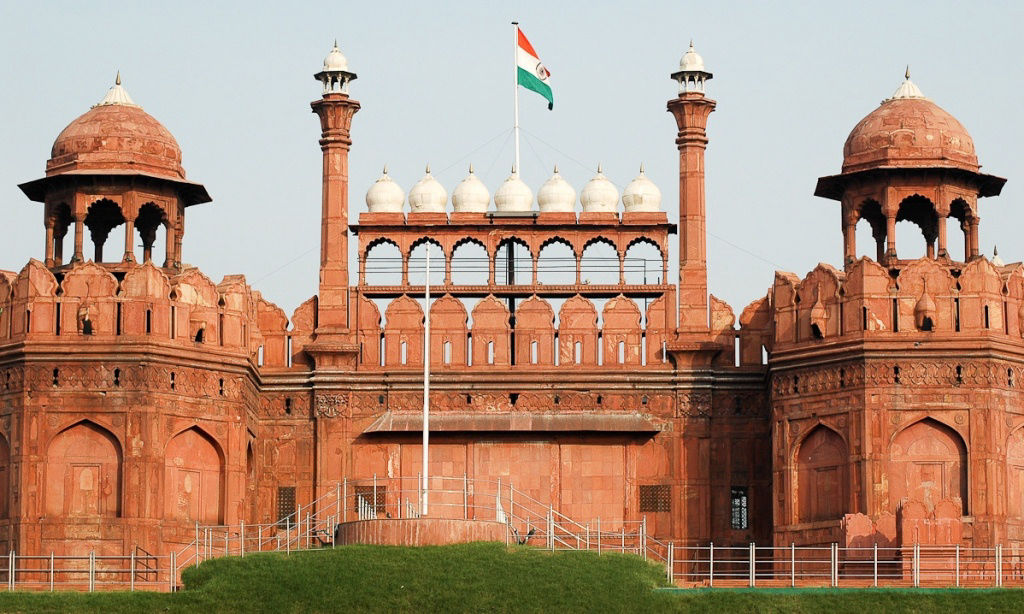
Arrive Delhi by an international flight. After clearing immigration and customs formalities you are met by a representative from First Tours India and transferred to The Imperial, a landmark luxury hotel inaugurated by Lord Willingdon in 1936. The capital of India, Delhi is its third largest city with a population of about 16 million. Its strategic location has given it a focal position in Indian history and many great empires have ruled from here. The monuments and ruins of these are scattered throughout the city, often cheek by jowl with modern structures and high-rise towers.
The Imperial

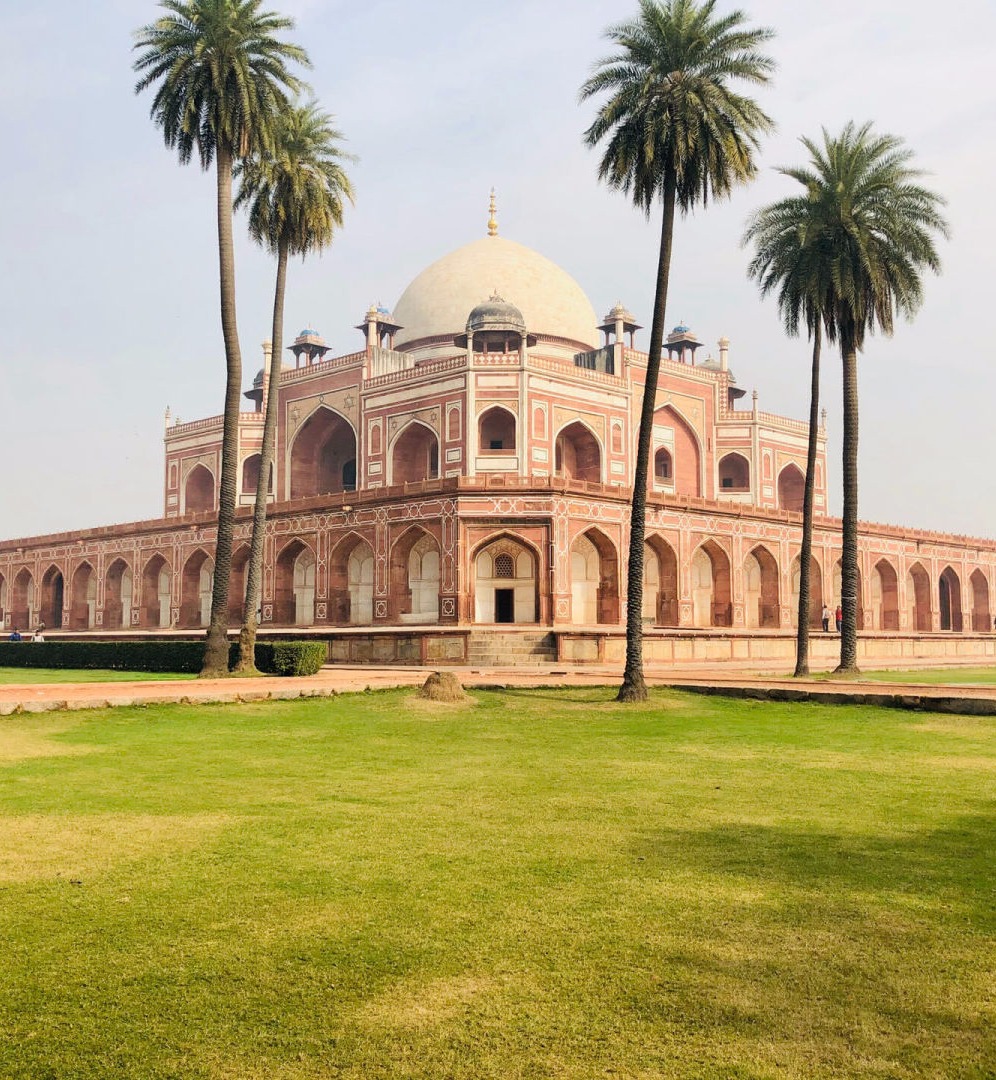
Enjoy touring of Old Delhi visiting the Red Fort (1639-1648) which reflects the grand but stultifying court etiquette of Shah Jahan. Enjoy a bicycle rickshaw ride to India's largest mosque Jami Masjid, the spiritual centre of Shahjahanabad. At this red sandstone mosque with bold marble carvings and intricate calligraphic inlay, the faithful stream in and out from the surrounding bazaars. Return to the hotel en route visiting Gandhi Memorial at Raj Ghat. This afternoon visit one of Delhi's most famous landmarks, the fluted red sandstone tower of Qutb Minar. Started in 1199, the tower tapers upwards from the ruins, covered with intricate carvings and deeply inscribed verses. Continue on to the 1564 Humayun's Tomb – the most arresting example of the synthesis of two of the great building styles of Asia – the Persian and the Indian. Humayun's red sandstone and marble tomb follow the octagonal form of the Delhi sultans' tombs with high central arches, fine proportions and incorporates the first "four-garden" that set the pattern for later Mughal memorials. Also explore the most grandiose and elegant Victorian section of New Delhi which contains the majestic government buildings conceived by Sir Edwin Lutyens and assisted by Herbert Baker.


Fly to Udaipur and transfer to one of the most romantic hotels of the world, Lake Palace. Spread over four acres in the middle of Lake Pichola, this palace was built in 1746 by Maharana Jagat Singh II of Mewar dynasty. Udaipur, often referred as the "Venice of the East" and "Most Romantic City of India", was the capital of the former princely state of Mewar and remained so until the state was merged with the Republic of India in 1947. Later this afternoon enjoy cruising the calm waters of Lake Pichola on a boat seeing the fabled city of Udaipur rise majestically above the lake in the middle of the Rajasthan desert.
Taj Lake Palace

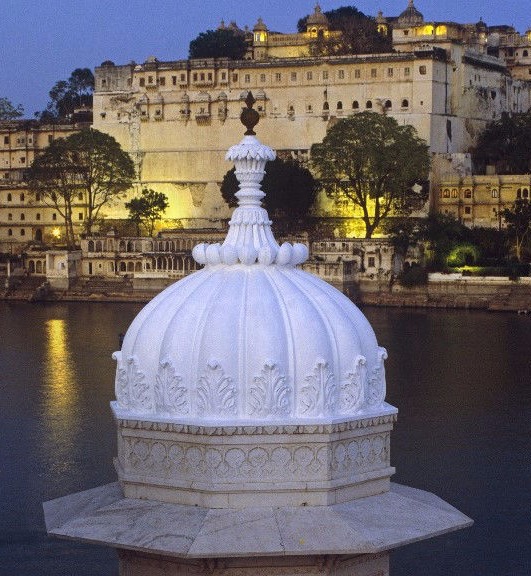
Set around the shimmering Pichola Lake and dominated by dramatic palaces, Udaipur's alleys and narrow streets lend it an almost medieval charm. Today visit Udaipur's fascinating City Palace, molded in soft yellow stone, its windowless base crowned with ornate turrets and canopies. Part of the Palace is now a museum with its marble and granite walls laden with brilliant miniature paintings and decorated with colored glass and mirrors. Continue on to Sahelion-Ki-Bari Park or the Garden of the Maids of Honor on the shores of the second major lake of Udaipur, Fateh Sagar. The park was constructed for forty-eight young ladies-in-waiting who were sent to the royal house as a part of a lavish dowry. It is beautifully laid out with extensive lawns and shady walks and is an excellent example of the Hindu art of landscaping. Also enjoy a panoramic drive around the lake area. The afternoon is at leisure to revitalize and invigorate your body at the spa where experienced therapists work with the mystical powers of aromatherapy and Ayurveda.

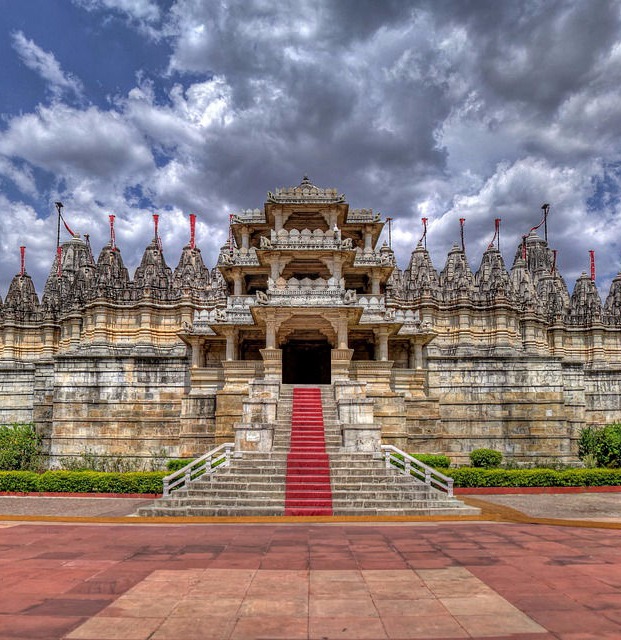
Drive overland to Jodhpur. En route stop at the secluded 1439 Jain temple complex at Ranakpur and visit the famous Adinath temple. It is a beautifully crafted marble edifice with 29 halls supported by 1444 pillars – no two of which are alike. Inspired by a dream of a celestial vehicle, Dharna Shah is said to have commissioned the temple construction, under the auspices and patronage of Rana Kumbha, the ruler of Mewar kingdom. After possible lunch at Maharani Bagh Orchard Retreat continue drive to Jodhpur, the second largest city of Rajasthan lies on the once strategic Delhi-Gujarat trading route. On arrival check-in to Umaid Bhawan Palace, the world's largest Art-Deco style private residence of the Jodhpur royal family. This immense palace, built of creamy-pink sandstone and marble, is a prime example of princely India's opulence. Designed by renowned Edwardian architect, Henry Lanchester, the palace is a blend of eastern and western architectural influences. The lavish interiors with gilt furniture and elegant artwork are complimented by the exotic murals of the self-exiled Polish artist Stefan Norblin.
Umaid Bhawan Palace


Jodhpur was founded in 1459 by Rao Jodha, the Rathore ruler of the kingdom of Marwar. With the majestic Meherangarh Fort towering over opulent palaces, colorful bazaars and the sands of Thar Desert, this historic city epitomizes all the romance and feudal splendor of Rajasthan. Enjoy sightseeing of Jodhpur this morning visiting the Meherangarh Fort, the most authentic surviving taste of ceaseless rounds of war, honor and extravagance that characterized Rajputana. Also visit Jaswant Thada, the 19th-century cenotaph, royal cremation ground of the former rulers of Jodhpur and the medieval markets selling textiles, antiques and spices. Jodhpur's bazaar lies clustered around a clock tower, and is a fascinating area to explore with its little shops selling silver jewelry, lacquer bangles, tie-dyed fabrics, soft camel leather shoes, puppets, clay figurines and colorful heaps of sweets and spices. The pavements are lined with henna artists who decorate women's palms with intricate, lacy patterns.

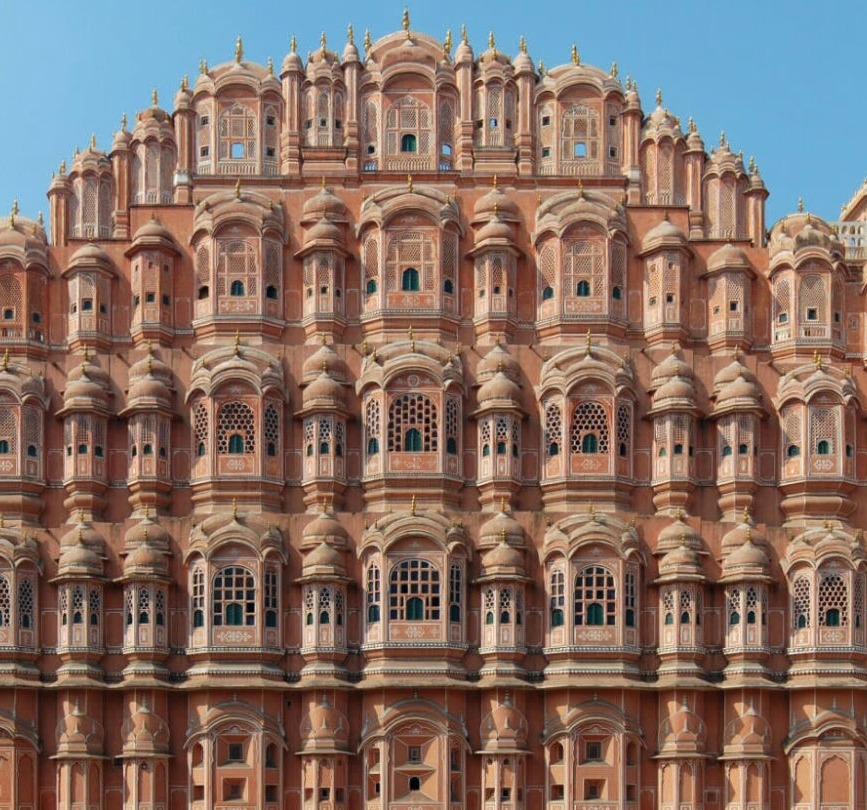
Fly to Jaipur, the flamboyant capital of the state of Rajasthan and transfer to The Rambagh Palace, the former residence of the royal family of Jaipur and now a spectacular luxury hotel spread over 47 acres of landscaped gardens. Famous for its colorful culture, forts, palaces and lakes, this historic city basks in the glory of a rich and eventful past. The afternoon is at leisure to explore some of the excellent shopping opportunities in Jaipur. Markets of Jaipur are famous for gold and silver jewelry and gem stones particularly emeralds, rubies, sapphires and diamonds. Jaipur is also specializes in printed cotton handicraft, carpets and durries; embroidered leather footwear and blue pottery.
Rambagh Palace

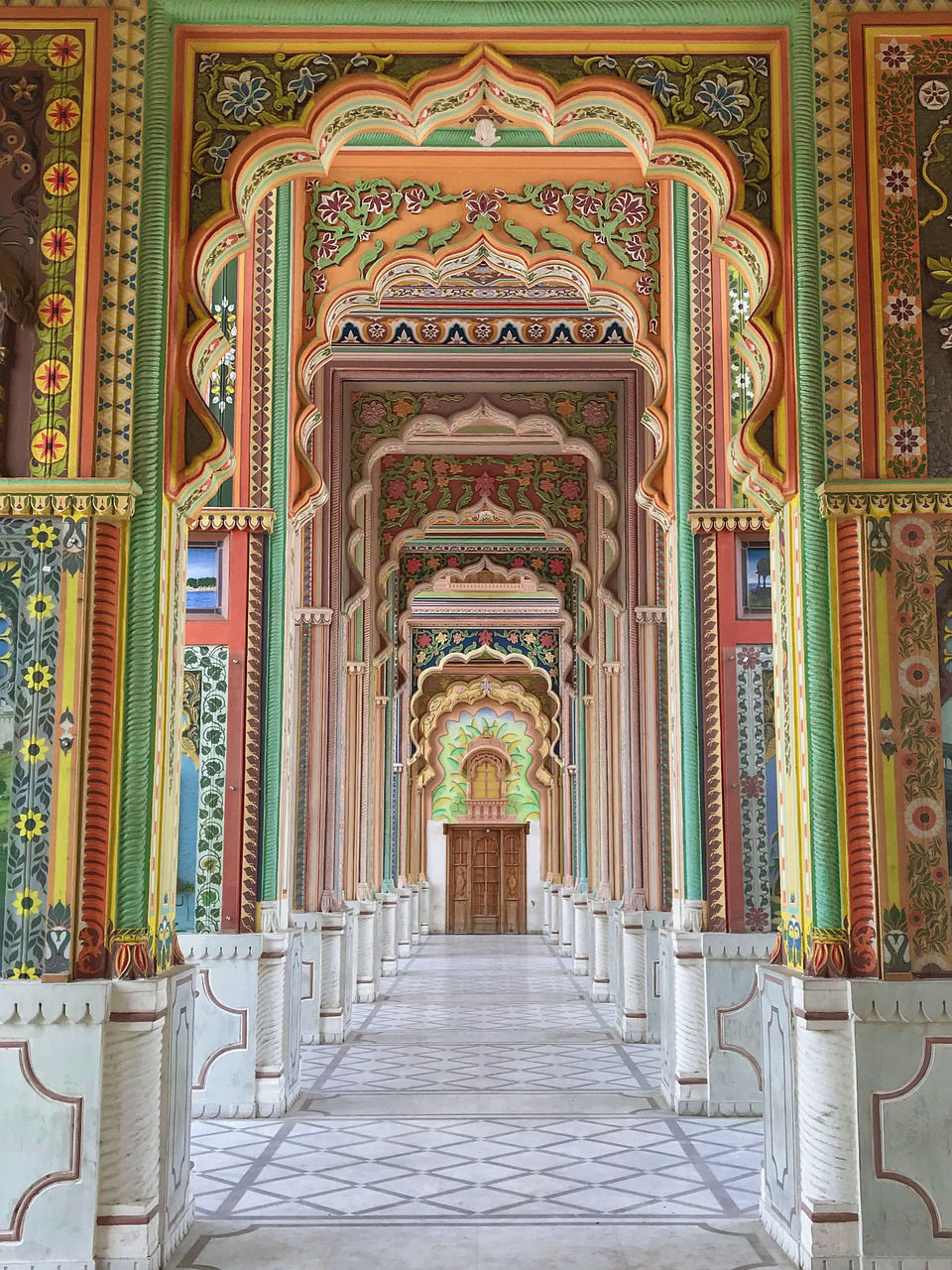
Today drive 7 miles north of Jaipur to visit Amber Fort, the ancient capital of the Rajputs from 1037 until 1728. Fortified by natural hills, high ramparts and a succession of gates ascend the Fort on elephant back and visit Amber's magnificent palaces. The building of the fort-palace was started by Raja Man Singh, a noted Rajput general in Akbar's army in 1600, and the architecture shows distinct Mughal influence. The practice of covering walls with mosaics of mirrors was first introduced to India by the Mughals. Enjoy sightseeing this afternoon visiting Jaipur's most famous monuments - the Palace of Winds and Jantar Mantar Observatory - both within the City Palace Complex, at the heart of the Pink City. The city's single most striking feature, its pink color, did not form part of the original design. The buildings were sallow yellow and first given a pink wash - traditionally the color of hospitality - when the city was spruced up for the visit of Prince Albert from England in 1856. The exhibits and interior design of the City Palace have lost none of the pomp and splendor of their glory days. Each door and gateway is heavily decorated, each chandelier intact and each hall guarded by turbaned retainers decked in full royal livery impressing the continuity of a living royal presence.

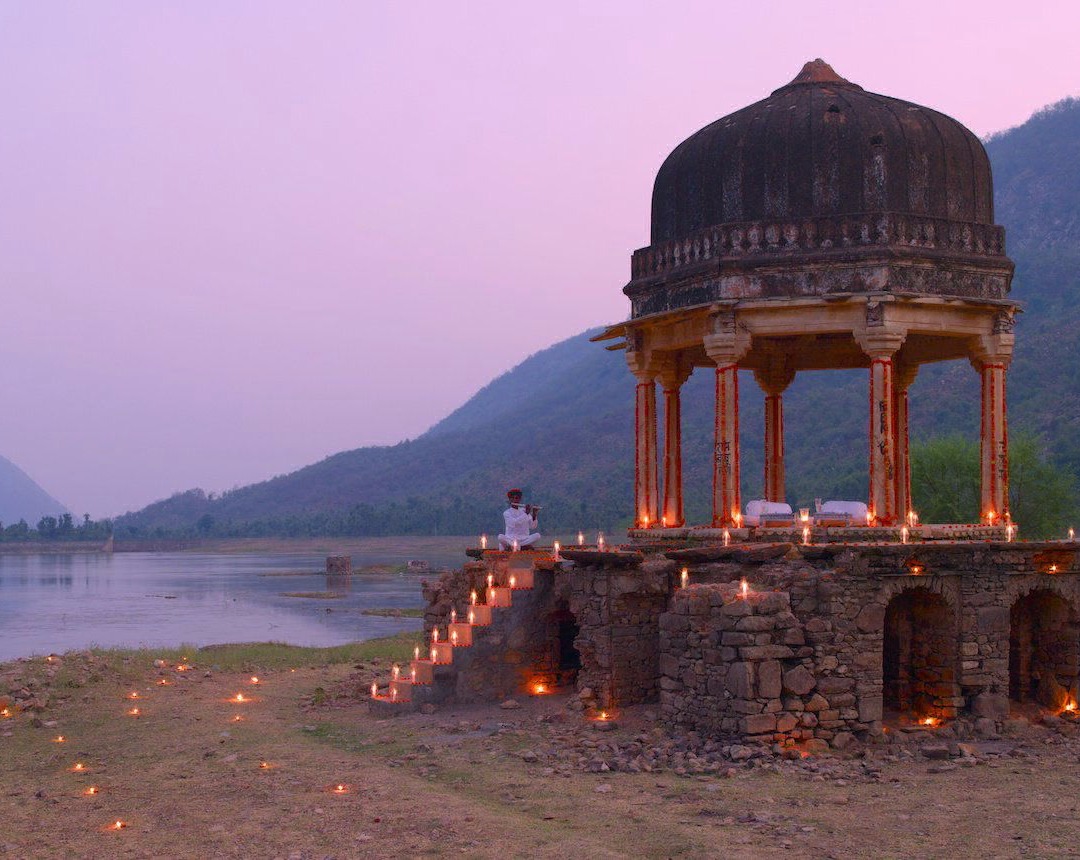
After a leisurely breakfast drive 2 hours through scenic Rajasthani countryside to Amanbagh. Derived from the Sanskrit word for 'peace', aman, and the Hindi word for 'garden', bagh, Amanbagh is a verdant oasis of mature palm, fruit and eucalyptus trees lying within a walled compound that was once the staging area for royal hunts. Evoking the palatial grandeur of the Mughal era, Amanbagh provides a tranquil refuge from which to access the rich heritage of Rajasthan's dramatic frontier region. The afternoon is at leisure to indulge in a range of specialized Ayurvedic and aromatherapy treatments in the resort's spa or explore the surrounding areas.
Amanbagh

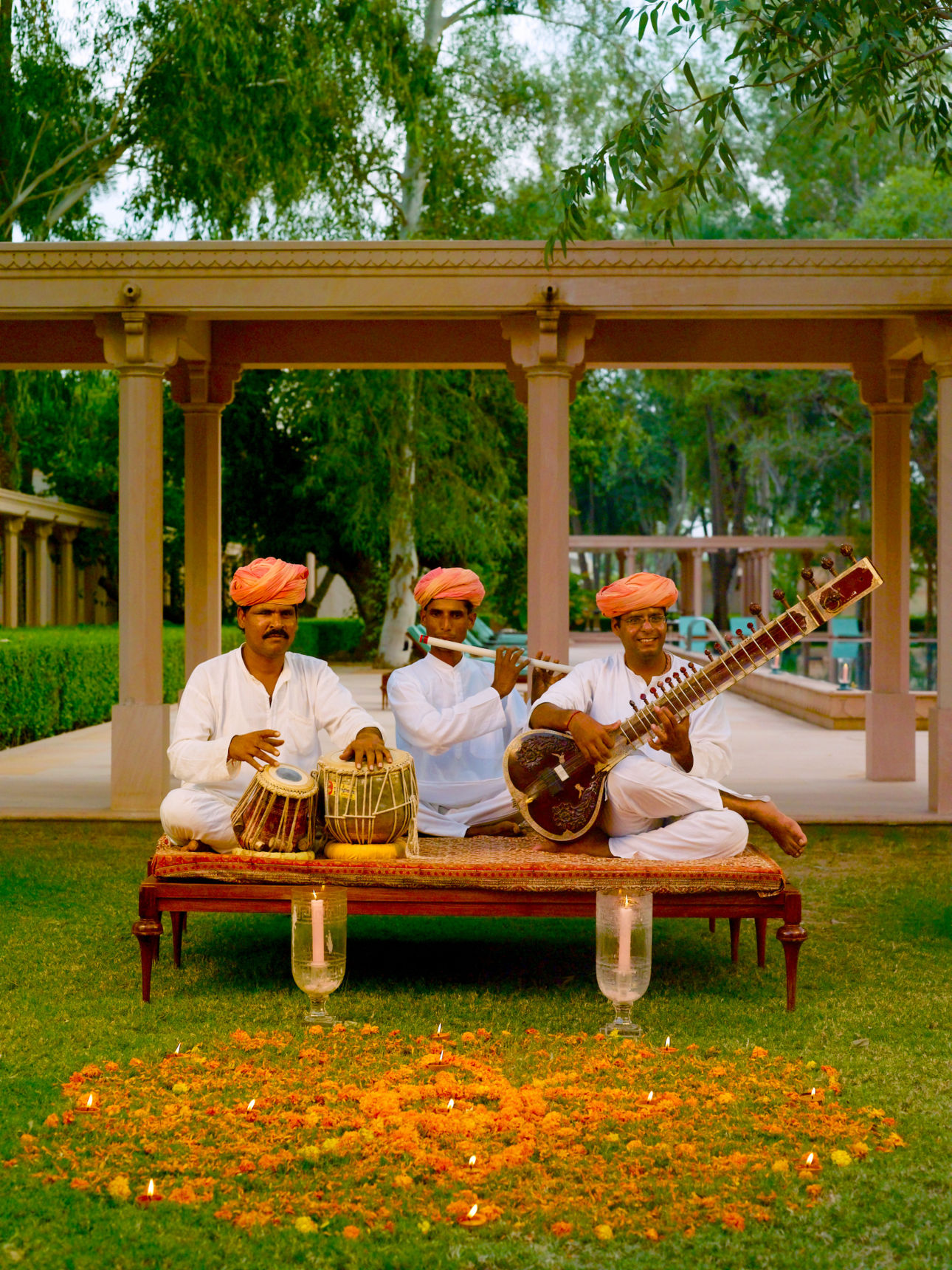
Begin the day with a private sunrise Yoga lesson. This is a serene spiritual experience that will be tailored to your ability. Following this enjoy a specially prepared breakfast among the ruins. After breakfast there will be time to explore this ancient abandoned city. Of great archaeological importance is the Bhangarh, located 6 miles from Amanbagh. Magnificently preserved, this Mughal-Hindu princely city was built in 1631 by Madho Singh, brother of Emperor Akbar's general, Man Singh. A generation following its completion, it was deserted overnight after being cursed by a court magician, who unsuccessfully attempted to seduce Bhangarh's beautiful Queen. Still uninhabited today, this city of magnificent bazaars, palaces, gardens, temples and bathing pools stands as a perfect memento to 17th century princely India. This afternoon join your local guide for a half day Cow-Dust tour to visit a few of the traditional Meena Villages. They are renowned for their colorful dress, jewellery and crafts. The Meena have retained their traditional lifestyle that embraces few hints of modernity. This is a wonderful local experience where village life unfolds in front of you and you cannot help but be touched by the stunning smiles of the children that rush to meet you.

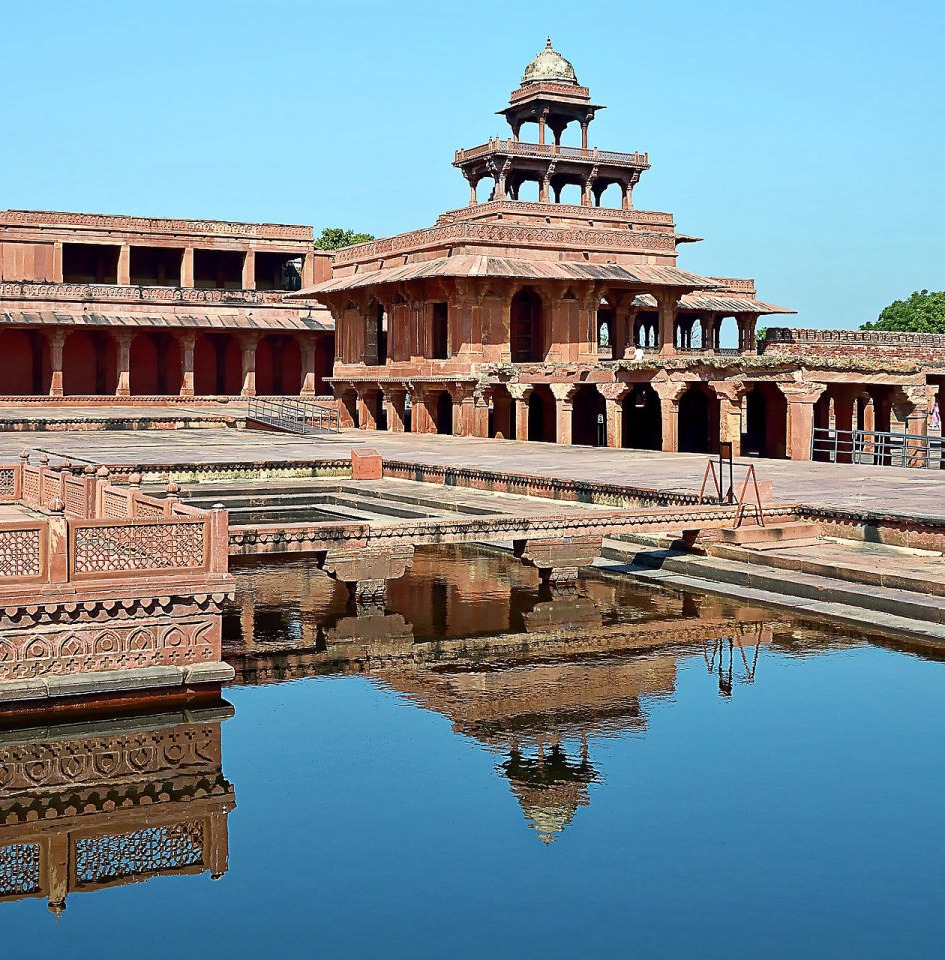
Drive 4 hours through scenic countryside to the ghost city of Fatehpur Sikri, a former capital of the great Mughal emperor Akbar. Built between 1571 and 1585, it has lain silent for almost four centuries. Now deserted, it is almost perfectly preserved - a masterpiece in sandstone with the stunning elegance of its palaces, mosques and courts glowing in subtly changing shades of red. After sightseeing, drive a short distance to Agra. On arrival check-in to The Oberoi Amarvilās, a luxury resort located just 500 meters from the world famous monument of love - the Taj Mahal. Built in a style inspired by Moorish and Mughal architecture, the resort is a splendid display of terraced lawns, fountains, reflection pools and pavilions with rich interiors that take you back to an era of Emperors and Princes. Agra was the seat of Imperial Mughal court during the 16th and 17th centuries before the capital was shifted to Delhi. The city strategically located on the banks of the Yamuna, flourished under the patronage of the great Mughal Emperors attracting artisans from Persia, Central Asia and also from other parts of India who built luxurious forts, palaces, gardens and mausoleums.
The Oberoi Amarvilās

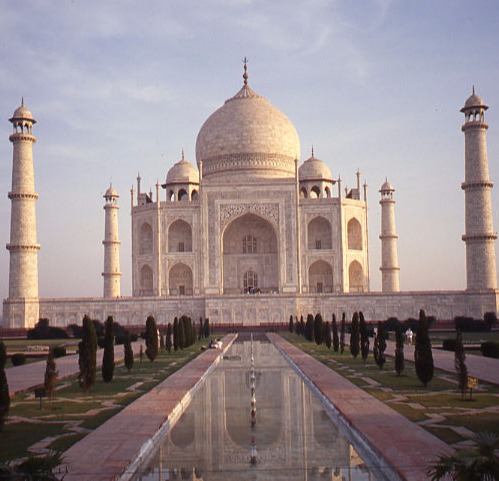
Wake up to the glorious sight of the Taj Mahal, bathed by the first rays of dawn. Visit the Taj Mahal at sunrise when the monument appears to change its hue, tinted by the glow of the rising sun. After breakfast proceed to visit Agra Fort situated on the banks of river Yamuna. This imposing structure of palaces, mosques and audience halls contained within its massive walls was founded by the Mughal Emperor Akbar in 1565. The high red-sandstone ramparts of Agra Fort dominate a bend in the River Yamuna northwest of the Taj Mahal. This afternoon re-visit the Taj Mahal at sunset when the monument appears to change its hue, tinted by the glow of the setting sun. In the memory of his favorite wife Mumtaz Mahal who died at the age of 39 while giving birth to their 14th child, the great Mughal Emperor Shah Jahan built this most extravagant and incomparable monument of love.

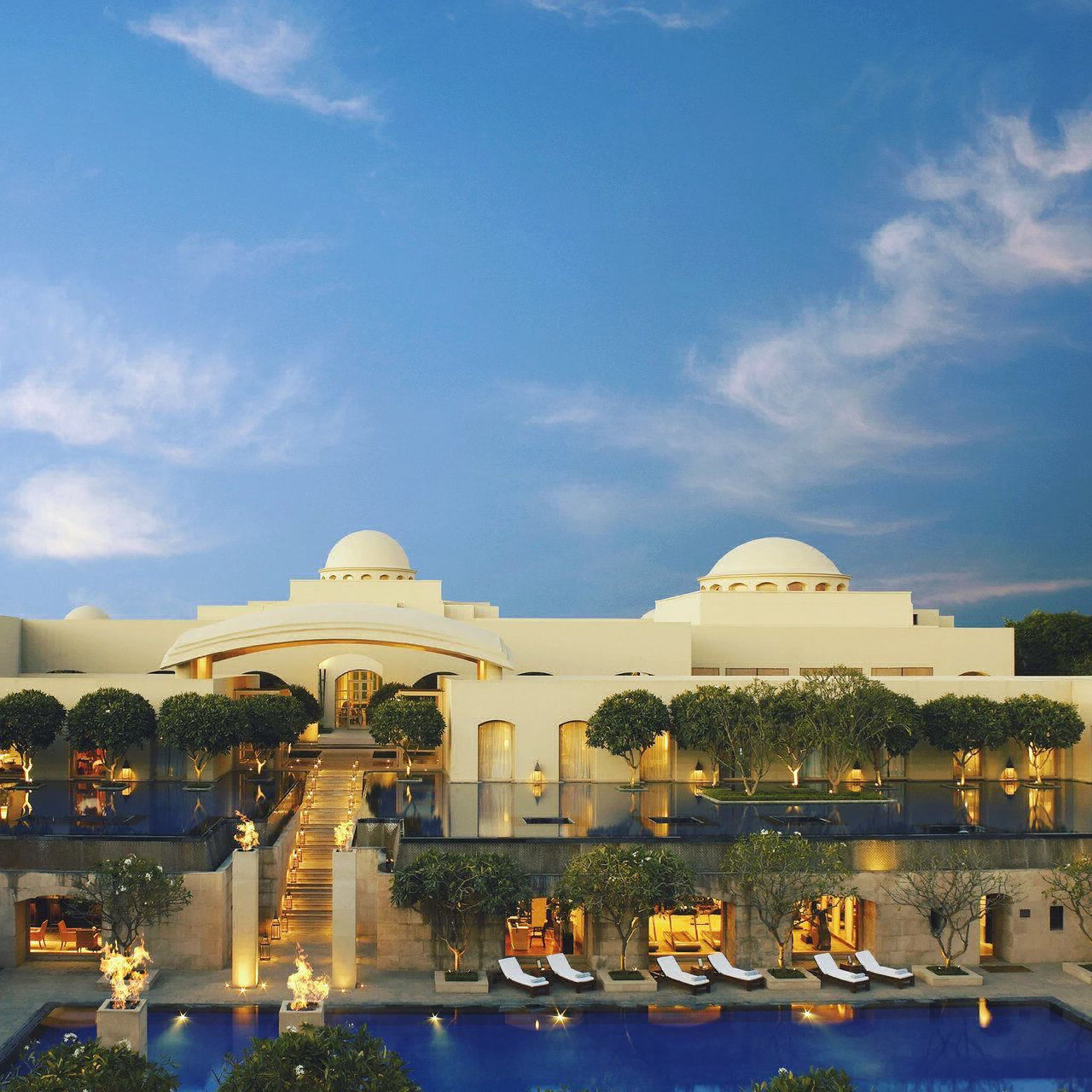
After a leisurely breakfast depart Agra and drive 125 miles in 4½ hours to Delhi. Arrive Delhi and check-in to Trident Gurgaon where day-use room is reserved. Set in an expanse of 7 beautifully landscaped acres, Trident Gurgaon has an imposing yet serene presence, a resort like ambience. It is characterized by domes, long corridors and walkways, inner courtyards, reflection pools and fountains.
Trident Gurgaon
Today depart Delhi with colorful memories that will add
untold pleasure to last for a lifetime.
